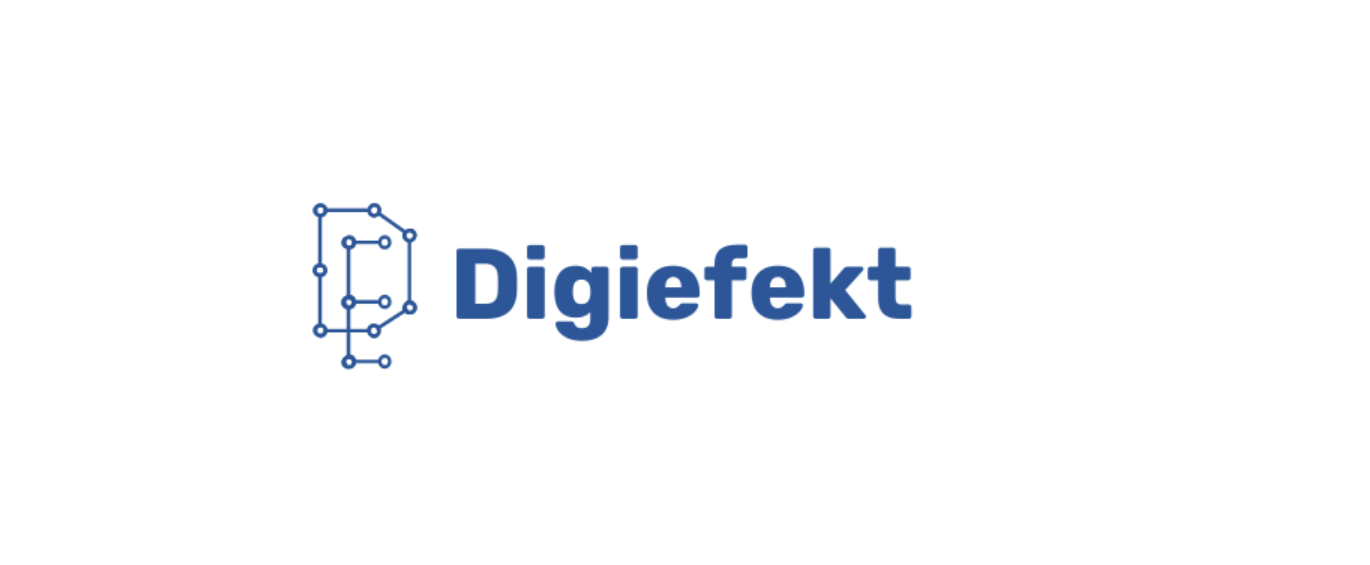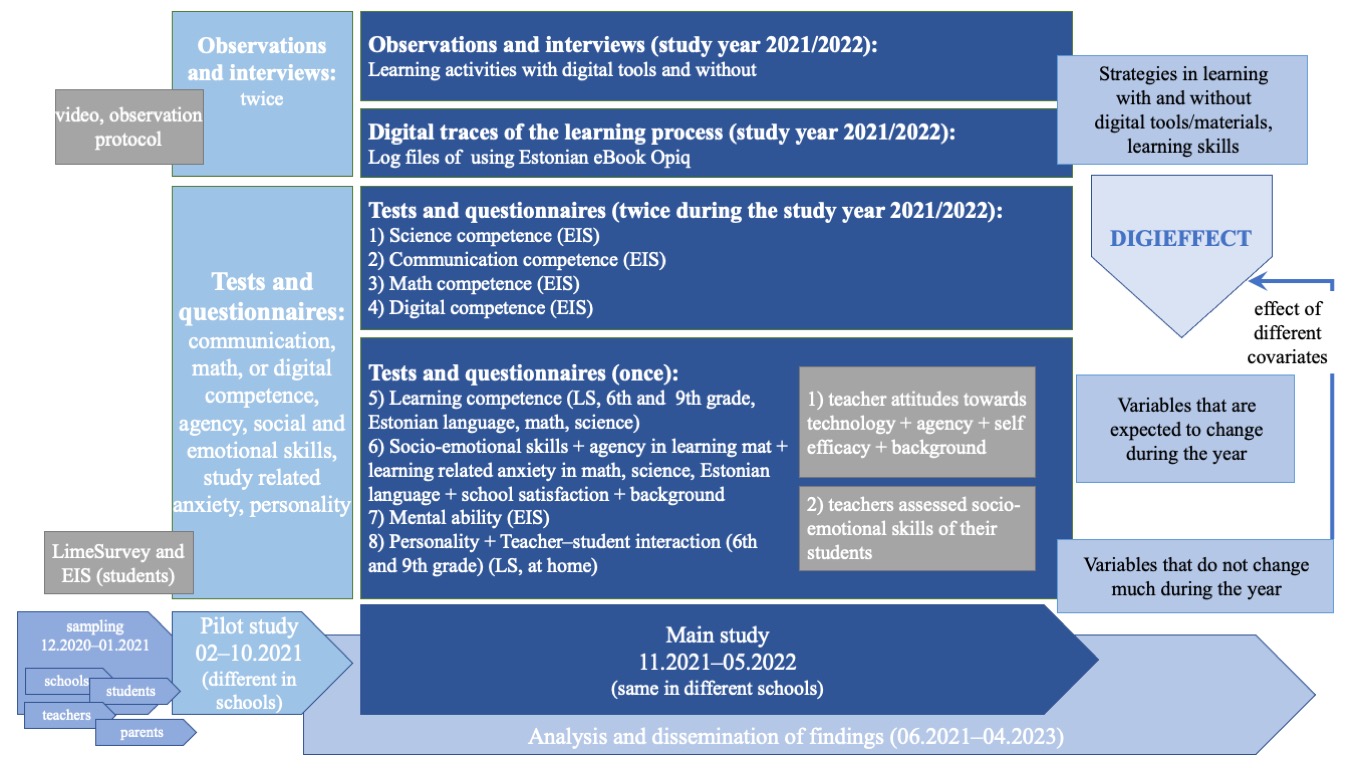
About the project
The Digiefekt project investigated the uses and aims of digital learning materials in Estonian general education schools as well as the characteristics [MT1] of the learning process, students, teachers, classes and schools and the interrelationships between those characteristics. In particular, the project had four aims:
- A framework for the uses of digital learning materials was composed based on the observations of 3rd-, 6th– and 9th-grade natural science, maths and Estonian lessons and interviews conducted with the teachers who taught the lessons observed. Additionally, the log data of Opiq, a set of e-textbooks widely used in schools, were used to describe the learning process.
- The frequency of the uses of the digital learning materials was described based on the framework composed and the log data.
- Based on data from different questionnaires, tests and registers[MT2] , a database describing students’ cognitive and non-cognitive skills and background factors relevant to the development of those skills was created. Student data were mostly collected directly from the students but partly also from parents and teachers. Additionally, data were collected about the students’ teachers of natural science subjects, maths and Estonian, and the schools’ background information was provided.
- Forecast models were created predicting the effect of the uses of digital learning materials and the supportive or restrictive factors thereof on students’ cognitive and non-cognitive skills; the validity of those models was tested. Also, the extent to which the predictable characteristics can be described on the individual level or on the class level was established.
Data were collected from students from 62 classes in 14 schools. Lessons of 93 teachers were observed: mostly one lesson, but in the case of some teachers, several lessons. The sample of schools was purposive: all Estonian general education schools with Estonian as the language of instruction that had grades 3, 6 and 9 were divided into three groups based on three characteristics:[MT3] 1) students’ academic results in national exams and standard-determining tests, 2) school satisfaction based on a national survey and 3) digital readiness based on various types of input (national standard-determining test on digital competence, school’s self-evaluation, school satisfaction survey questions for school staff and parents). The three groups that were distinguished were schools with the highest, average and lowest results. Only the schools in the highest or lowest group were included in the sample. Based on those two levels of the three characteristics, eight groups were formed (high-high-high; high-high-low; high-low-high; low-high-high; high-low-low; low-low-high; low-high-low; low-low-low). In each group, schools were ranked based on their typicalness (e.g., in the high-high-high group, the school with the highest average score in the three characteristics ranked first). The schools were recruited based on ranking; when a school would not agree to participate in the study, the one ranked next was contacted. The ranking did not include schools with missing data for at least one characteristic.
The project had four distinct stages:
- preparation (approval by the Ethics Committee was sought; the sample was recruited and selected; data collection instruments and methods were adapted or developed) – the year 2020;
- pilot study (new or adapted assessment instruments and methods and the entire study procedure were tested) – the year 2021 until October;
- main study (data were collected for the study) – November 2021 to June 2022;
- analysis and conclusions (organising and analysing data, giving feedback to schools, publishing and disseminating results and making recommendations) – started in June 2021 and lasted until the end of the project on 30 April 2023 but essentially continues with additional analyses.
The design of the study conducted in the project is shown in the following figure:

The results of the project are summed up in a slideshow at http://lingid.ee/digiefekt. The project team was the following:
Principal investigator: Margus Pedaste
Senior research staff: Äli Leijen, Evelyn Kiive, Krista Uibu
Other research staff: Ilona Võik, Triinu Kärbla, Katrin Saks, Gerli Silm, Aleksandar Baucal, Piret Einpaul, Meeli Rannastu-Avalos, Marje Johanson, Maarja Sõrmus, Tea Ausin, Kenn Konstabel, Doris Kristina Raave, Kristi Palk, Meriliis Kasemets, Marit Puusepp, Külli Kallas, Leo Siiman, Yaroslav Opanasenko, Gady Pähklemäe, Triinu Pääsik, Kõue Heintalu
In the preparation of feedback, Aleksandre Bregadze was involved.
In data collection, Alge Ilossaar, Laivi Laanemets, Mailen Remmelg, Kersti Veskus, Maarja Pertel, Maarika Pähklemäe, Roman Sten Tõnissoo, Triin Kivisikk, Anette Siinvert and Lili Jürisoo were involved.
The project was financed by the Ministry of Education and Research; project number DIGIVARA5 “The effect of using digital learning materials for learning and teaching in the context of Estonian basic school” (01.05.2020−30.04.2023)


